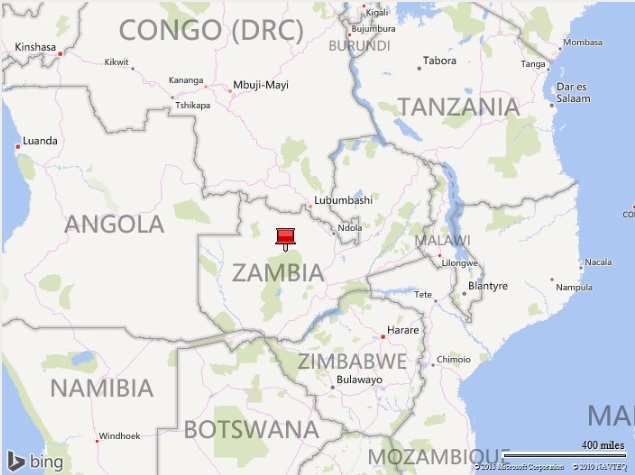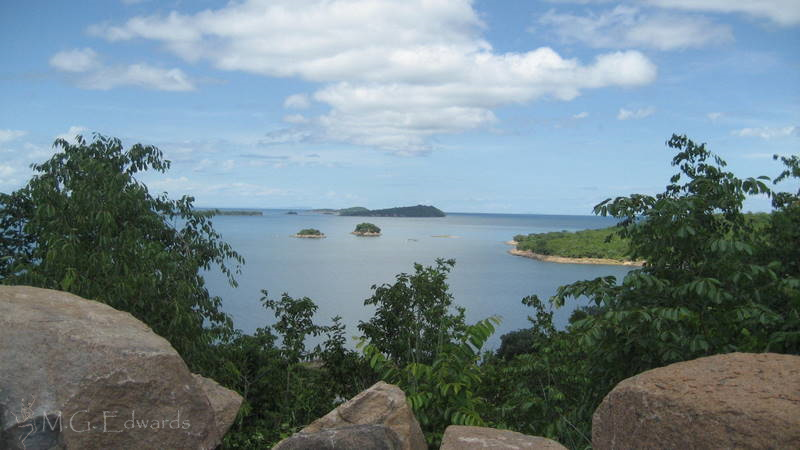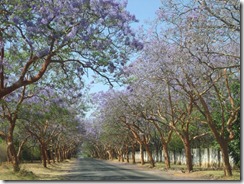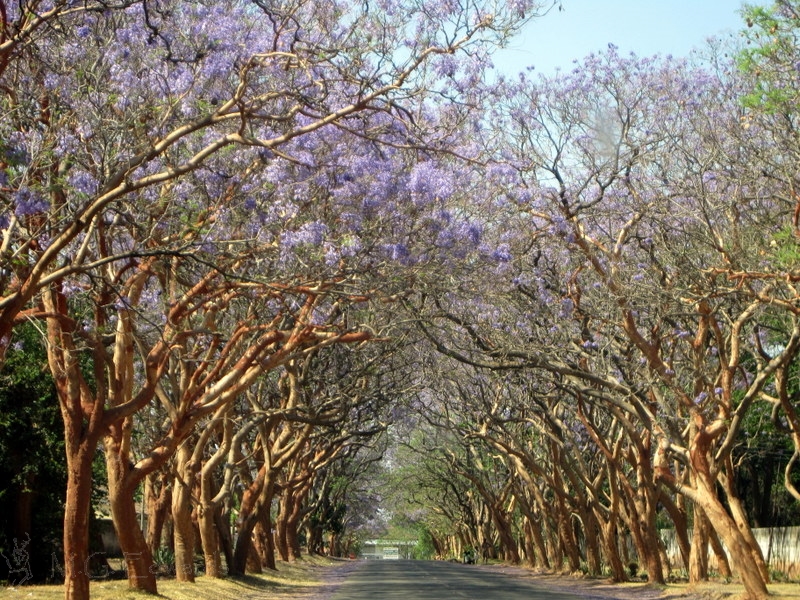Top Ten Things to See in Zambia
Click here for an updated version of this post with photos and more details about the Top Ten Things to See in Zambia.
I’ve done this list for Korea. Almost two years into our tour in Zambia I finally found the inspiration to put together a “top ten” list of things to see in Zambia. These are by no means a scientifically random sample or a results of a public opinion poll; they are my own choices based on my own biased preferences I think will give you a good taste of Zambia. Many of them I have visited or done myself; some I included based on their reputation as a tourist destination. Here they are:
- Victoria Falls (Zambia/Zimbabwe): I’ve been to arguably the world’s largest waterfalls several times, and they never cease to amaze me. These are by far Zambia’s biggest drawing card. Many tourists will take a detour from South Africa to do an overnight trip to the Falls and in nearby Livingstone, Zambia or the town of Victoria Falls, Zimbabwe. The falls are spectacular from both the Zambian and Zimbabwean sides; more of the upper falls is in Zambia and the lower portion with better views in Zim. There are several good hotels; the high-end (and expensive) Victoria Falls Hotel on the Zim side and Royal Livingstone Hotel or Zambezi Sun on the Zambia side are your best bets. The best time to see the falls is between July and September. In February-March the falls are a wall of mist, and they’re nearly dry in November and December. I especially enjoyed visiting in November when the falls were at their lowest. That’s when the catch basin looks like the Grand Canyon. Swimming in the famous Devil’s Pool next to Livingstone Island beside a 105 meter drop is an experience of a lifetime you can only do in November. If you’re an adventurous sort, there’s also bungy jumping or zip lining from the Victoria Falls Bridge and whitewater rafting in some unruly rapids.
- South Luangwa National Park: This is one of several national parks in Zambia and by far the most famous. It features the most wildlife of any game park in the country. It’s either a short flight or a 10-hour drive from Lusaka; flying is more convenient but expensive. The game drives are fabulous. For high-end lodging, stay at the Chichele Lodge, the presidential retreat of former president Kenneth Kaunda (1964-91), or at award-winning Mfuwe Lodge inside the park. There are numerous less expensive lodges and bush camps in the area.
- Lower Zambezi River: The lower Zambezi River basin is a short drive south of Lusaka and a great place for a long weekend getaway. There are several lodges in the Chirindu and Chiawa areas near the confluence of the Zambezi and Kafue Rivers. Great for bush camp excursions, safaris, hunting, fishing and boat cruises.
- Lake Tanganika/Kasaba Bay: Kasaba Bay on Lake Tanganika in Northern Province is currently under development as a major tourist destination. Once completed in the next decade, it will feature several resorts on the shores of one of Africa’s major Rift lakes. For now you have to drive through Mporokoso or fly into Kasama and do a car hire, but once completed you’ll be able to fly there directly from Lusaka. Northern Province is one of Zambia’s most beautiful provinces with several large waterfalls overshadowed by Victoria Falls.
- Kuomboka Traditional Ceremony: Each year the Lozi tribe holds its annual Kuomboka ceremony marking the end of the rainy season. The date varies with the end of the season (this year it’s scheduled for April 16). Held in Limilunga, Western Province, at the Barotse king’s palace, it is arguably the country’s most famous traditional ceremony and a great example of traditional culture in Zambia. The gift shop at the Barotse Royal Museum has some great local crafts for sale. With recent unrest in Western Province, ask ahead if you’re thinking about attending this year’s ceremony.
- Liuwa Plains Wildebeest Migration: One of the world’s largest animal migrations passes each November through remote Liuwa Plains National Park in Western Province. Thousands of migrating wildebeest and head back toward Namibia. A word of caution – the park is remote, and the roads are very sandy and difficult to navigate even with a 4×4. It’s advisable to visit with an organized tour operator or in a caravan.
- Saturday Dutch Market: Every last Saturday of the month, Zambia’s largest open-air food and crafts market sets up shop at the Dutch Reformed Church in the Kabulonga area of Lusaka. Artisans from Zambia and neighboring countries bring their crafts to you. It’s one of the few places where you can find Zimbabwean soap stone sold beside Zambian copper plates. If you miss this market, try the smaller Sunday market at the Arcades Shopping Centre in Lusaka that happens weekly. Be sure to bargain – I found that vendors will reduce prices as low as 40 percent of their original quote.
- Kasanka Bat Migration: Each October the world’s largest migration of giant fruit bats occurs at Kasanka National Park in Northern Province. You’ll go batty with excitement or fear from the approximately eight million bats that swarm harmlessly above you.
- Visit a compound: Most urban Zambians live in poor neighborhoods known as “compounds.” Ask a local you trust to take you during the day to one of the safer compounds in Lusaka to buy a carton of Shake-Shake chibuku (fermented corn meal) at the local pub. Two of the largest and safer compounds in Lusaka are the Bauleni Compound on Leopard’s Hill Road and Kalingalinga Compound off Alick Nkhata Road. Walk around and savor the fascinating flavor of local Zambian life.
- Lake Kariba: Spend a weekend on the world’s largest artificial lake. Stay in the town of Siavonga for a nice relaxing getaway. Take a boat cruise and visit the Lake Kariba dam; dine on local crayfish. I posted an article about our recent trip to Lake Kariba in February.
















